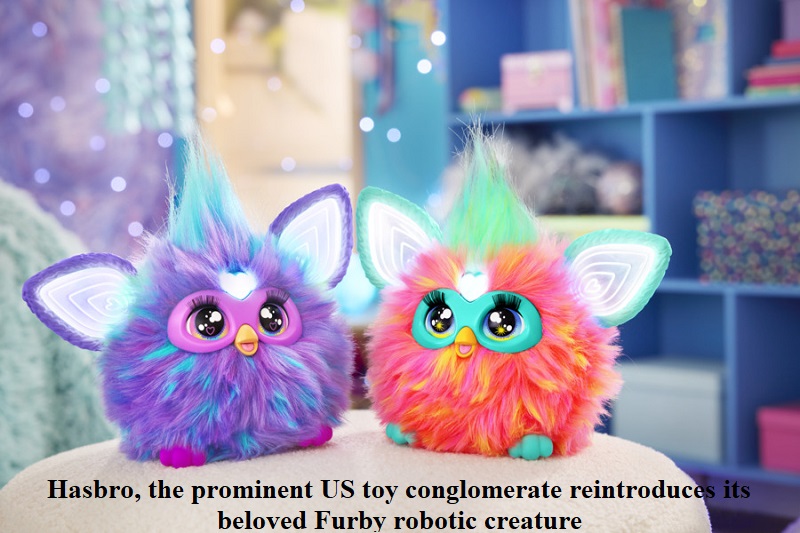
Hasbro, the well-known American toy conglomerate, has reintroduced the beloved Furby robotic creature in an attempt to captivate a new generation of children with its charming and inquisitive qualities. Originally launched twenty-five years ago, Furby gained immense popularity worldwide. The redesigned Furby maintains its distinctive characteristics, including the iconic bulbous eyes, yellow beak, and vibrant fur. It continues to communicate through playful gibberish and responds to gestures like hugs, pats, and tickles. “Over the past few years, we’ve conducted extensive research to understand what features kids would like to see in a new Furby,” said Kristin McKay, the Vice President and General Manager at Hasbro, as quoted by the BBC.
What is Furby? Furby is a robotic toy creature that was initially introduced by Tiger Electronics and later acquired by Hasbro. It gained immense popularity upon its release in 1998 and quickly became a global sensation. Furby is renowned for its interactive capabilities and its ability to “learn” and respond to its surroundings. The original Furby was an electronic plush toy with a unique appearance. It featured large, expressive eyes, a beak-like mouth, and soft, colorful fur. Furby could move its ears, blink its eyes, and produce various sounds. It also had sensors that allowed it to detect touch, light, and sound. One of the most fascinating aspects of Furby was its language system. It communicated through a combination of pre-programmed phrases and gibberish, which sounded like a distinct language. Over time, Furby could learn and adapt to its interactions, responding differently based on its experiences. It could also interact with other Furbys, enabling them to communicate and even sing together.
The new Furby The latest version of the toy boasts an impressive repertoire of over 600 responses. It can react to commands, mimic sounds, perform lively dances, and even simulate being “fed.” When Furby originally debuted, it achieved instant global success. Within the first three years of its launch, over 40 million units were sold, according to Hasbro. The early Furby models featured infrared eyes that facilitated communication between individual toys. Additionally, these interactive companions were capable of “listening” to conversations and, with a gentle pat on the head, could be taught to utter a selection of words.
Throughout the years, Furby underwent several enhancements, such as the replacement of its infrared eyes with two small LCD screens. Hasbro also developed a smartphone and tablet app that translated Furby’s unique language into English, providing an additional layer of engagement for users.
However, as the Furby phenomenon gradually subsided, the toy was retired in 2016. Now, Hasbro’s decision to reintroduce Furby stems from a desire to revive lackluster sales in the current market.

Post Your Comments